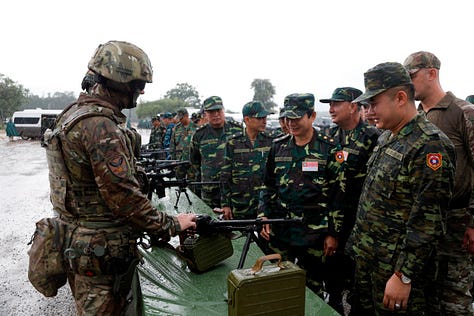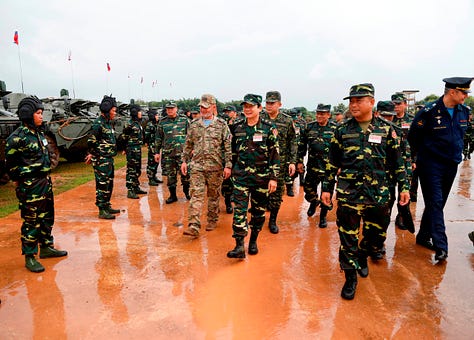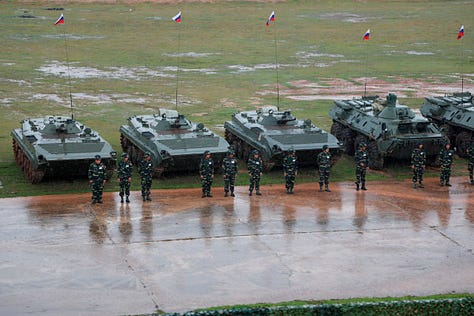Laos-Russia Bilateral Military Training Event Draws Attention To Potential Proliferation Of Armed "FPV" Multirotor Drones In Southeast Asia
🇱🇦 🇷🇺 Minimal Comment
Minimal comment-themed posts are used to introduce data points for use in other posts going forward. Posts of this theme will typically feature minimal analysis and commentary.
The Laotian and Russian militaries have undertaken a bilateral training event held in Laos. This bilateral training event comes amid the ongoing Cambodia-Thailand border conflict, which has left Cambodia in the uncomfortable position of being beholden to China for economic and even (peacetime) military support—in a manner not dissimilar to Laos—without being able to count on Beijing for firm security guarantees, given the value that Beijing places on China-Thailand relations. Given this, Cambodia and Laos are likely to diversify their security providers going forward, including, for example, a country such as Russia that may be open to selling a long-range air defence system such as the S-400, long-range strike munitions such as Iskander ballistic missiles and the likes of Shahed-136/Geran-2/Garpiya propeller-driven fixed-wing strike drones, among other types of military equipment, so that these small Southeast Asian countries can bolster their military capabilities against a far larger, better-resourced, and better-equipped country like Thailand.
While Cambodia and Laos have very limited resources to spend on military equipment, and notwithstanding the fact that Russia’s military industry is poorly positioned to fulfill export orders for the foreseeable future for as long as the Russia-Ukraine War continues, Russia is increasingly well-positioned to offer countries like Cambodia and Laos with far less expensive and, as such, more plentiful, munitions such as armed “first-person video” (“FPV”) multirotor drones of the types that are being built and employed on a seven-digit annualized basis in the Russia-Ukraine War. Stated differently, Russia is very well-positioned, particularly if there is a lasting ceasefire in the Russia-Ukraine War, to sell countries such as Cambodia and Laos, say, ten thousand armed “FPV” multirotor drones. Assuming a higher than normal profit margin for Russian armed “FPV” multirotor drone manufacturers when supplying an export customer, as well as a training package and spare parts, countries like Cambodia and Laos may have to pay something in the region of US$10 million to US$15 million for around ten thousand armed “FPV” multirotor drones.



While the fact that Ukraine is increasingly well-positioned to share its expertise and its armed “FPV” multirotor drones with Western countries and other potential export customers worldwide has been widely discussed, Russia is, of course, similarly well-positioned to share its expertise and its armed “FPV” multirotor drones with other countries. Both Russia and Ukraine are likely to have a fairly short window to monetize their experience, expertise, and technology before this market segment becomes very crowded with largely undifferentiated and, in effect, highly commoditized armed “FPV” multirotor drones. Given the poor state of government finances resulting from an economically ruinous war, Russia is likely to be highly motivated to export its armed “FPV” multirotor drones to paying customers. The provisioning of armed “FPV” multirotor drones is also likely to constitute a tool that Moscow is likely to use in order to reestablish relations and, more generally, bolster relations, following the isolation that it has faced as a result of the Russia-Ukraine War. Countries such as Laos and perhaps Cambodia may become some of the first export customers for Russia’s armed “FPV” multirotor drones.

